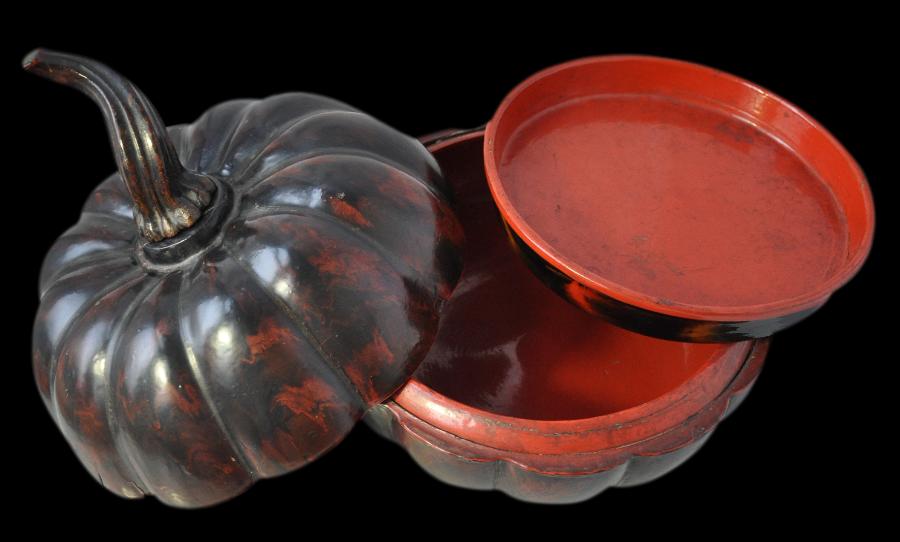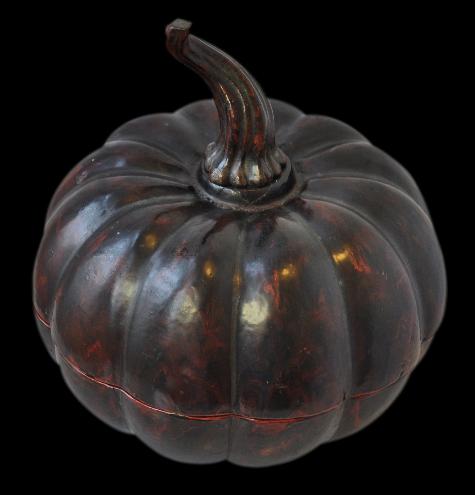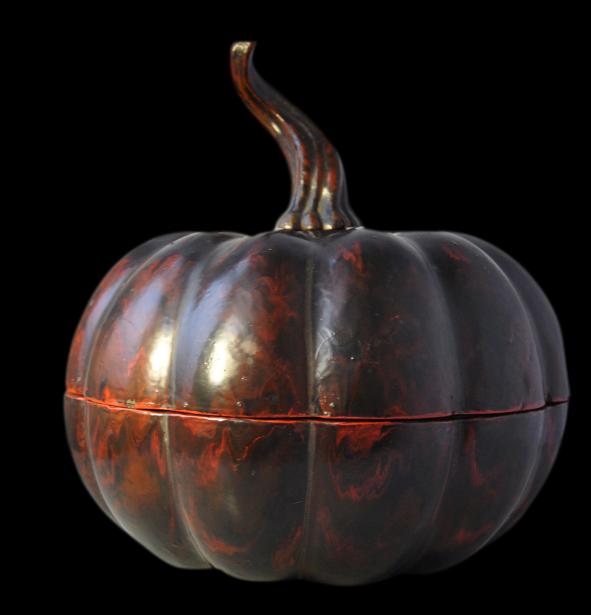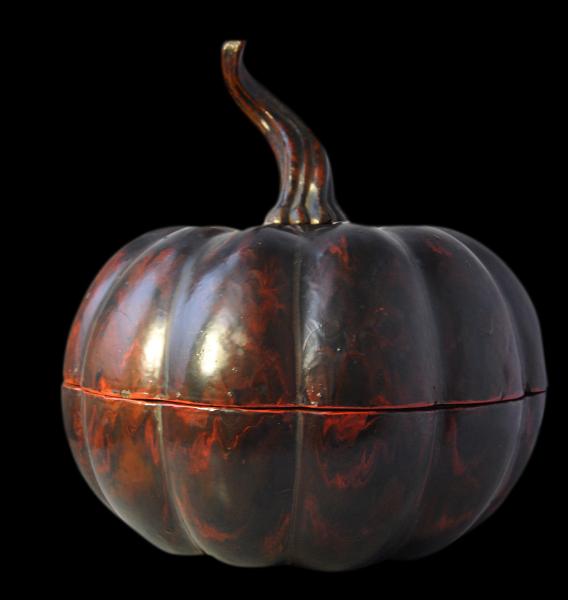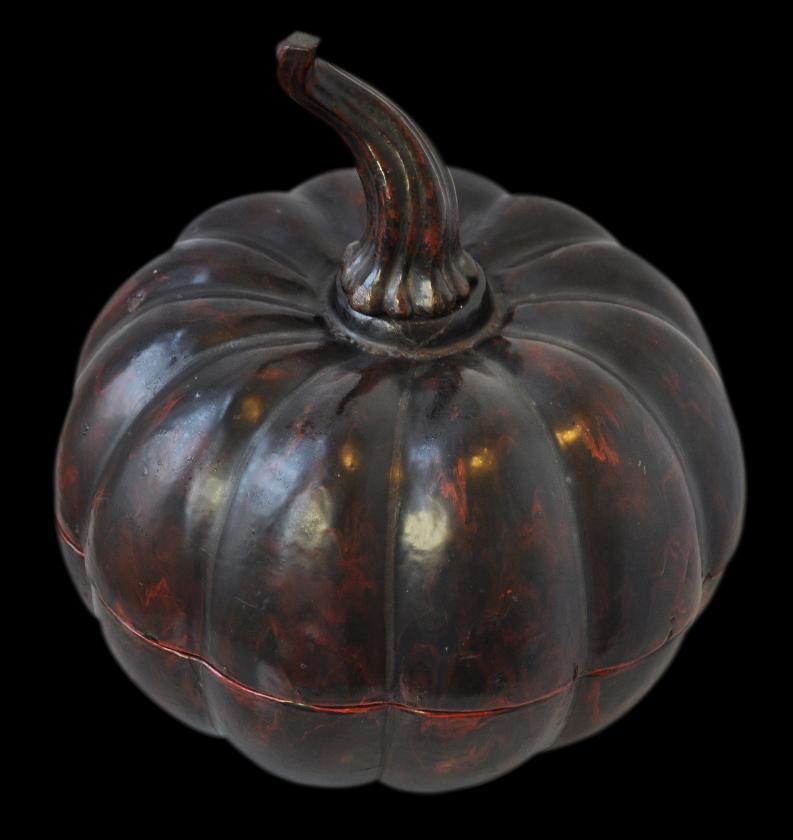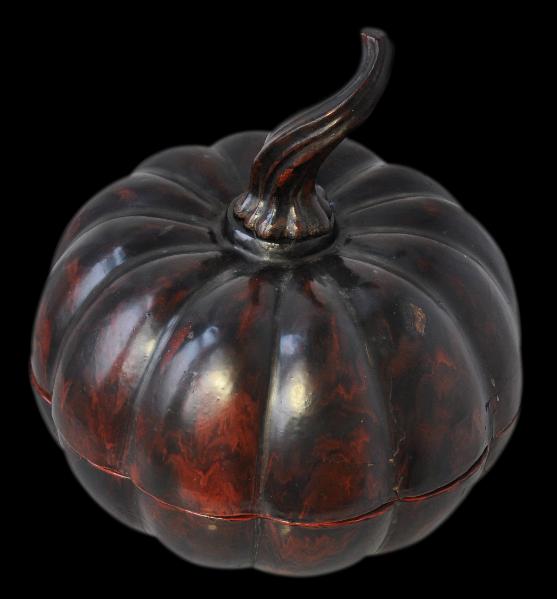
Burmese Lacquer Pumpkin Box
Rare Lacquered Pumpkin Box (Shwe Hpayonthi It)
Burma (probably Pagan)
late 19th century
height: 28.5cm, diameter: 27cm
This highly sculptural box in the form of a large pumpkin is from Burma, and most probably from Pagan in northern Burma. It dates to the late 19th century. A similar example in the British Museum and illustrated in Isaacs & Blurton (2000, p. 225) is similarly dated to the late 19th century.
The bulging ribs of the pumpkin were made separately from a thick putty of raw lacquer and teak sawdust. Each rib was then glued with lacquer onto a basket foundation. The whole assembly was then lacquered with several coats. A read and yellow lacquer ‘paint’ was then applied before the final coat was dry giving the pumpkin the blotchy, swirling pattern over its exterior surface, a pattern that seems specific to this type of pumpkin vessel (Isaacs & Blurton, 2000, p. 225).
The naturalistically twisting stem handle is of carved and lacquered wood. It is detachable and attaches to the pumpkin by means of a bayonet fitting.
The pumpkin retains its one internal tray, which like the rest of the interior, is coated with red lacquer.
According to Isaacs & Blurton, such boxes were used like a type of
hsun ok, and were for carrying cooked food to a monastery, the food being offered to the monks as an act of merit-earning.
The box is in very fine condition for its age with no serious chips of other losses. It is highly sculptural and has clear age.
References
Isaacs, R., & T.R. Blurton, Burma and the Art of Lacquer, River Books, 2000.
Provenance
UK art market
Inventory no.: 1942
SOLD

